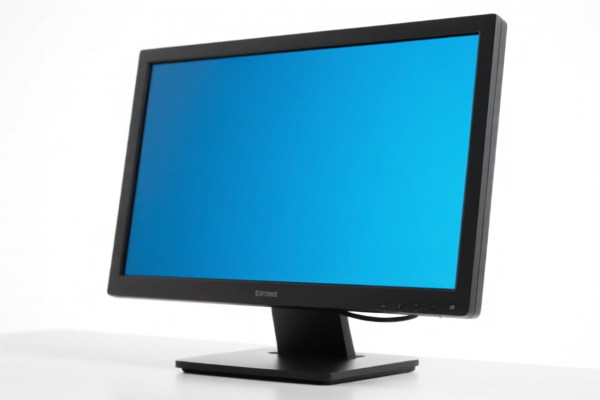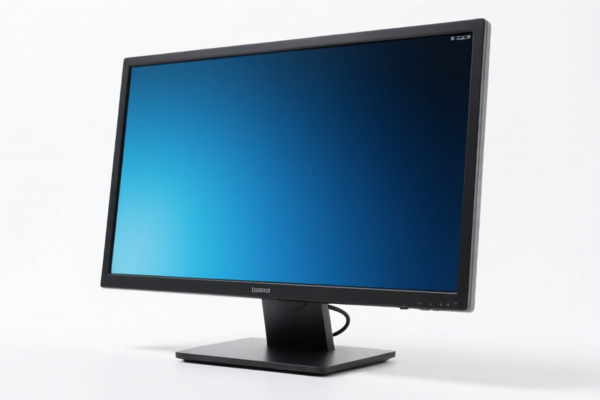| HS Code | Official Doc | Tariff Rate | Origin | Destination | Effective Date |
|---|---|---|---|---|---|
| 8528593350 | Doc | 5.0% | JP | US | 2025-05-12 |
| 8528727220 | Doc | 0.0% | JP | US | 2025-05-12 |
| 9023000000 | Doc | 0.0% | JP | US | 2025-05-12 |




LCD Monitors
Liquid Crystal Display (LCD) monitors are flat-panel, video display devices that use liquid crystals to produce images. They have largely replaced cathode ray tube (CRT) monitors due to their smaller size, lower weight, and lower power consumption.
Material
The core component is a liquid crystal layer sandwiched between two polarized glass panels. Backlights illuminate the crystals, typically using LEDs (Light Emitting Diodes), though older models used Cold Cathode Fluorescent Lamps (CCFLs). Other materials include plastic for the casing, electronic components for control and processing, and a power supply. The polarizing filters are crucial for controlling light passage based on the electrical state of the crystals.
Purpose
LCD monitors are used for visualizing information from various sources, including computers, laptops, gaming consoles, security systems, and medical equipment. They serve as the primary output device for displaying text, images, videos, and graphical user interfaces.
Function
LCD monitors function by manipulating the polarization of light passing through the liquid crystal layer. Each pixel consists of subpixels (red, green, and blue) that can be individually controlled by applying varying voltages. These voltages alter the alignment of the liquid crystals, controlling the amount of light that passes through each subpixel. By combining the light from these subpixels, a wide range of colors and brightness levels can be produced. A driver board controls the voltages applied to the pixels, receiving input signals from a video source.
Usage Scenarios
- Home Use: General computing, web browsing, entertainment (movies, streaming).
- Office/Professional Use: Document editing, spreadsheets, presentations, graphic design, video editing.
- Gaming: High refresh rate monitors for fast-paced games, low response time for reduced motion blur.
- Healthcare: Medical imaging displays requiring high accuracy and resolution.
- Security: Surveillance systems for viewing camera feeds.
- Industrial Control: Monitoring and control systems in factories and other industrial environments.
Common Types
- TN (Twisted Nematic): Known for fast response times and low input lag, making them popular for gaming. Generally have narrower viewing angles and less accurate color reproduction.
- IPS (In-Plane Switching): Offer wider viewing angles and more accurate color reproduction, making them suitable for graphic design and professional use. Typically have slower response times than TN panels.
- VA (Vertical Alignment): Provide a good balance between contrast ratio, viewing angles, and response time. Often used for home entertainment and general use.
- OLED (Organic Light Emitting Diode): Each pixel emits its own light, resulting in excellent contrast ratios, black levels, and color accuracy. More expensive than LCD monitors.
- Curved Monitors: Feature a curved screen for increased immersion and a wider field of view. Available in TN, IPS, and VA technologies.
- Touchscreen Monitors: Integrate touch input capabilities for interactive applications.
Key Specifications
- Resolution: The number of pixels displayed on the screen (e.g., 1920x1080 (Full HD), 2560x1440 (QHD), 3840x2160 (4K)).
- Refresh Rate: The number of times the screen updates per second, measured in Hertz (Hz). Higher refresh rates result in smoother motion (e.g., 60Hz, 144Hz, 240Hz).
- Response Time: The time it takes for a pixel to change color, measured in milliseconds (ms). Lower response times reduce motion blur.
- Contrast Ratio: The difference between the brightest and darkest colors that the monitor can display.
- Brightness: The amount of light emitted by the monitor, measured in candelas per square meter (cd/m²).
- Viewing Angles: The range of angles from which the screen can be viewed without significant color distortion.
- Panel Size: The diagonal measurement of the screen, measured in inches.
- Connectivity: Ports for connecting to video sources (e.g., HDMI, DisplayPort, VGA).
The declared goods are LCD monitors. Based on the provided information, the following HS codes are relevant:
-
8528593350: This HS code falls under Chapter 85, which covers Electrical machinery and equipment. Specifically, it relates to Heading 8528, covering Monitors and projectors, not incorporating television reception apparatus. The fourth two-digit section (59) indicates 'Other monitors', and the sixth two-digit section (33) further specifies 'Other'. The eighth two-digit section (50) denotes 'Color' with a 'flat panel screen' and 'LCD-type (direct view)'. The applicable tax rate is 5.0% (basic tariff) and 0.0% (additional tariff), resulting in a total tax rate of 5.0%.
-
8528727220: This HS code also falls under Chapter 85, Heading 8528 (Monitors and projectors, not incorporating television reception apparatus). The fourth two-digit section (72) indicates 'Reception apparatus for television, whether or not incorporating radio-broadcast receivers or sound or video recording or reproducing apparatus'. The sixth two-digit section (72) further specifies 'Other, color'. The eighth two-digit section (20) denotes 'With a flat panel screen' and 'LCD-type (direct-view), with a video display diagonal: Not exceeding 75 cm'. The applicable tax rate is 0.0% (basic tariff) and 0.0% (additional tariff), resulting in a total tax rate of 0.0%.
According to the provided reference material, the HS code options related to 'LCDmonitors' are limited, with only the following 2 found.
Customer Reviews
No reviews yet.